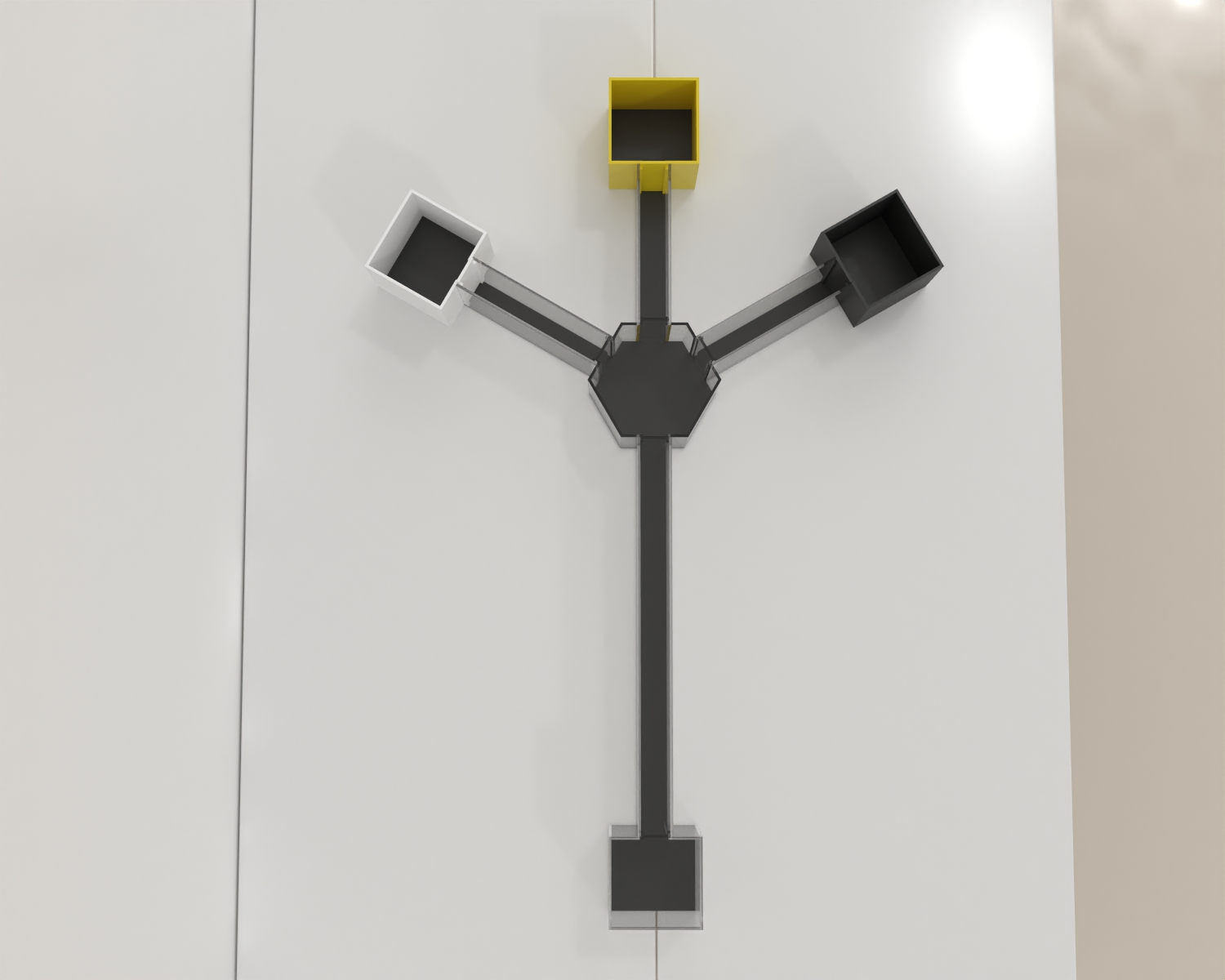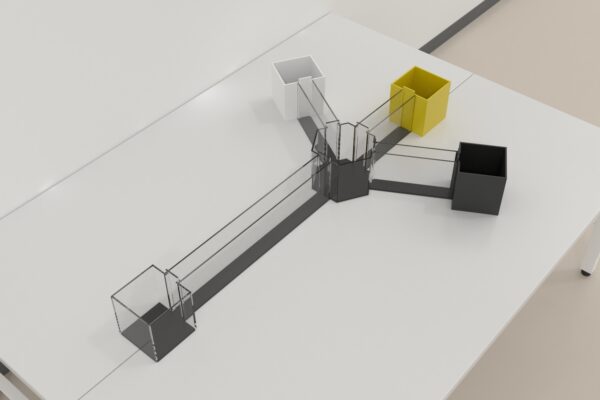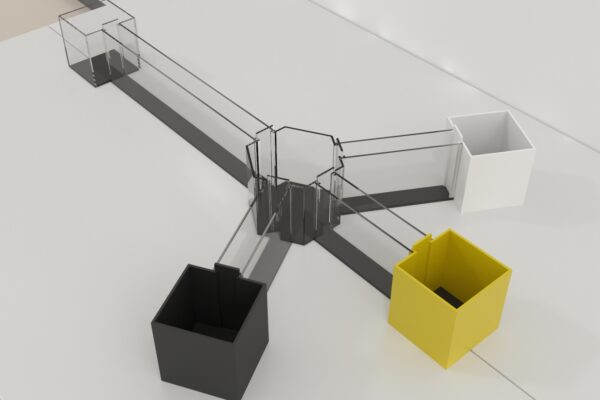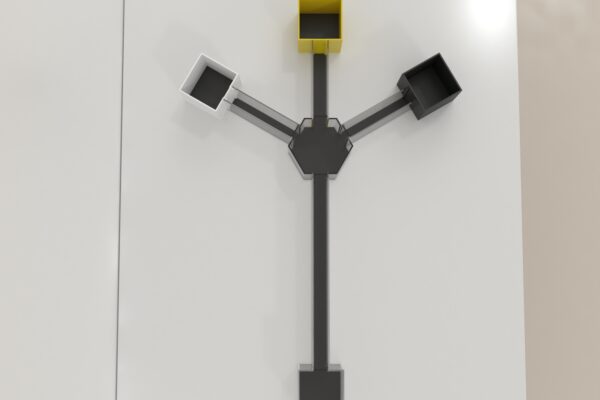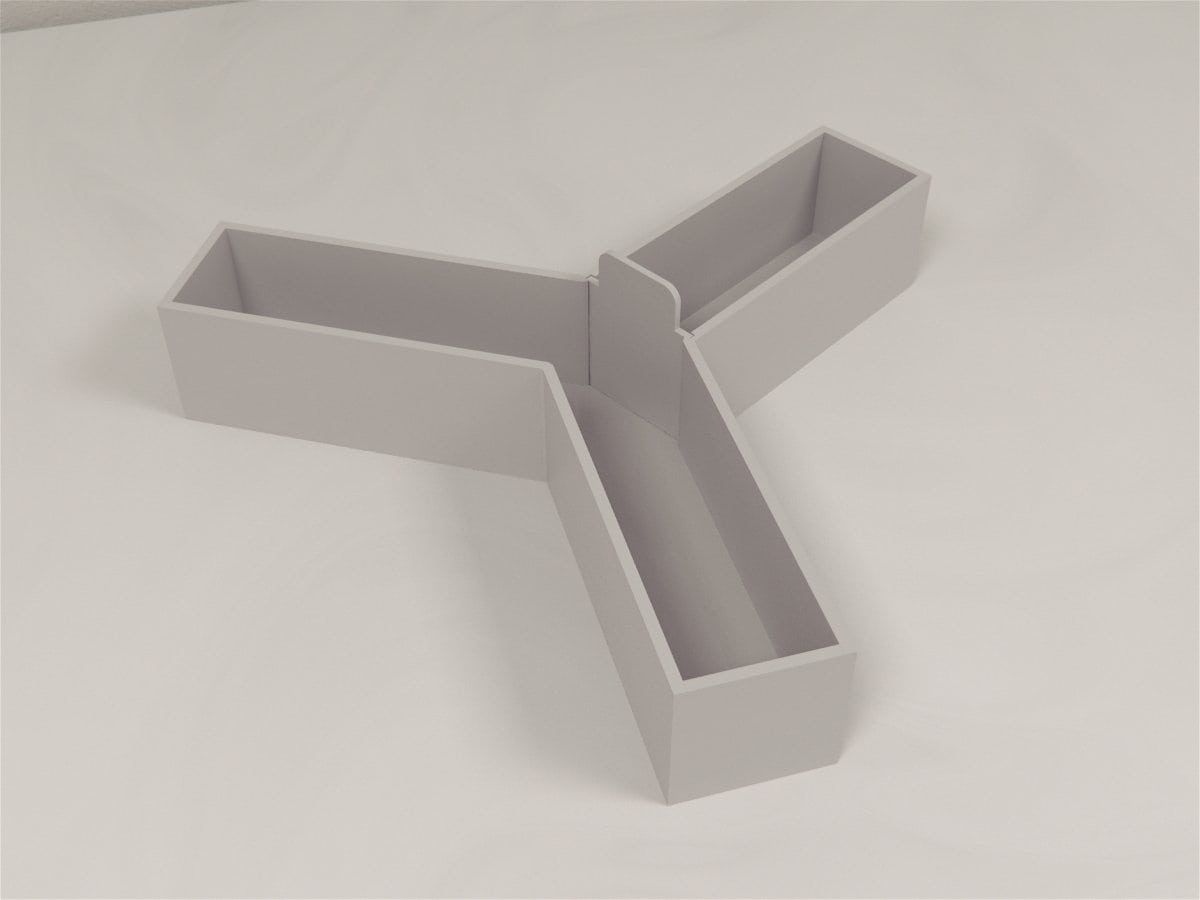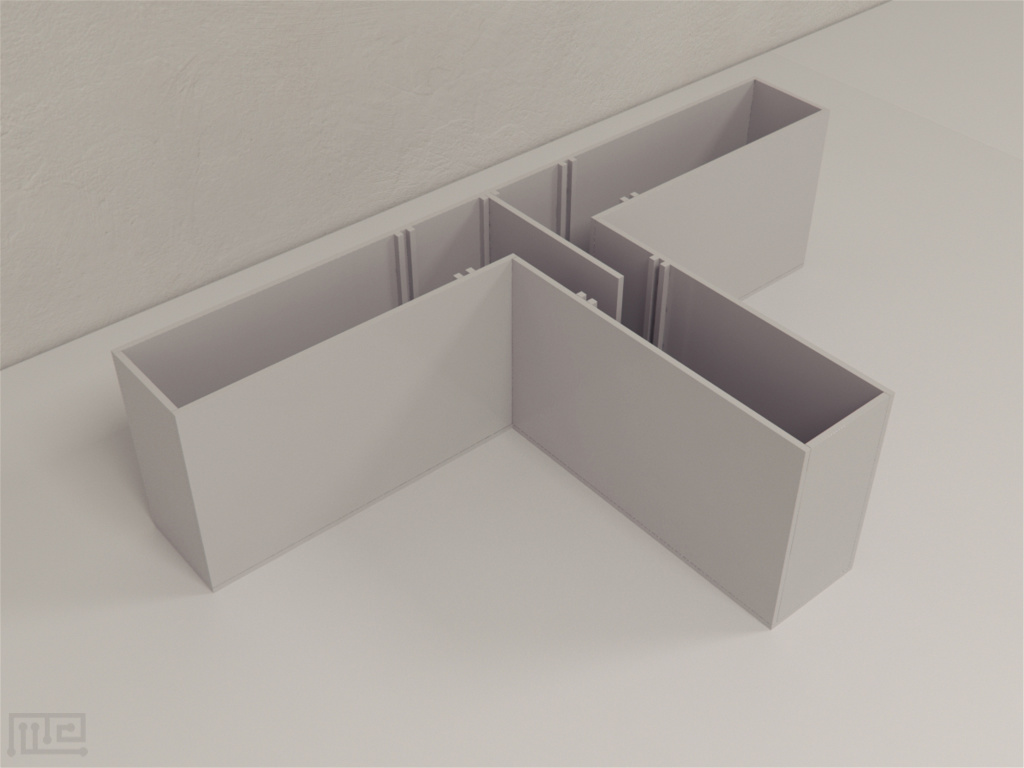Developed by Kennedy and Shapiro, the Rodent Trident Maze was used to investigate how motivation and memory interact to guide adaptive behaviors. The researchers recorded neuronal activity from the hippocampus of rats performing two tasks while either food or water deprived. They found that motivational state had a stronger influence on hippocampal coding during contextual memory retrieval, where motivational cues were required to select among goal-directed actions.
The Rodent Trident Maze is composed of acrylic with three arms with three interchangeable goal boxes at 45° angle from a hexagonal central platform and start arm. The Rodent Trident Maze is a cross between a Y Maze and T Maze.

